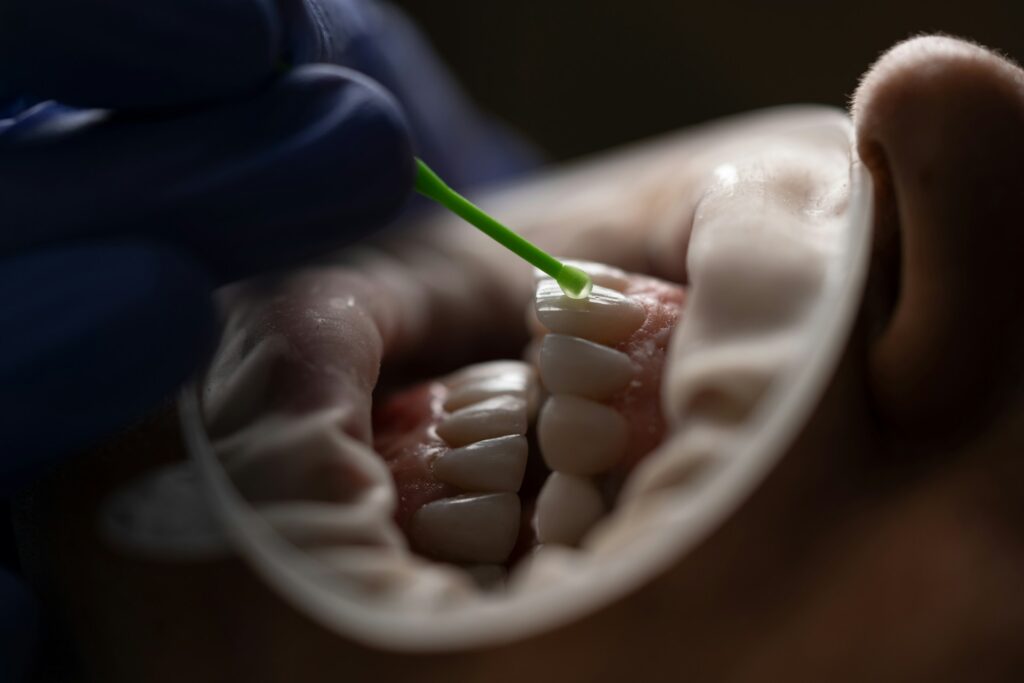Introduction: Are you tired of dealing with pesky cavities between your teeth? You’re not alone. Cavities between teeth, also known as interproximal cavities, can be a common dental issue that plagues many individuals. However, fear not! In this comprehensive guide, we’ll delve deep into the world of interproximal cavities and provide you with seven proven strategies to maintain optimal dental health. From preventive measures to treatment options, we’ve got you covered. So, let’s embark on this journey to healthier teeth and brighter smiles!
Cavities Between Teeth: Understanding the Issue
Cavities between teeth, often overlooked, can wreak havoc on your oral health if left untreated. These cavities typically form in the tight spaces between teeth where brushing and flossing may not reach effectively. As plaque accumulates in these areas, it produces acids that erode tooth enamel, leading to cavity formation. Common symptoms of cavities between teeth include tooth sensitivity, pain while chewing, and visible holes or pits in the affected teeth.
The Importance of Regular Dental Check-ups
Regular dental check-ups play a crucial role in preventing and detecting cavities between teeth early on. During these appointments, your dentist will conduct a thorough examination of your teeth and gums, using specialized tools to identify any signs of cavities or tooth decay. Additionally, professional cleanings can help remove plaque and tartar buildup, reducing your risk of developing interproximal cavities.
Effective Brushing Techniques
Proper brushing techniques are essential for maintaining optimal oral hygiene and preventing cavities between teeth. When brushing, be sure to use a soft-bristled toothbrush and fluoride toothpaste. Angle the brush towards the gum line and brush in gentle, circular motions to effectively remove plaque and food particles from between your teeth. Don’t forget to brush the surfaces of your tongue and roof of your mouth to remove bacteria and freshen your breath.
The Power of Flossing
Flossing is a critical component of any oral hygiene routine, especially when it comes to preventing cavities between teeth. Dental floss can reach areas that your toothbrush may miss, such as the tight spaces between teeth and along the gum line. To floss effectively, gently guide the floss between each tooth, using a back-and-forth motion to remove plaque and debris. Make sure to use a clean section of floss for each tooth to avoid transferring bacteria.
Nutrition and Dental Health
Your diet plays a significant role in your overall dental health, including the prevention of cavities between teeth. Limiting sugary and acidic foods and beverages can help reduce the risk of enamel erosion and tooth decay. Instead, opt for tooth-friendly snacks like crunchy fruits and vegetables, dairy products, and lean proteins. Additionally, staying hydrated by drinking plenty of water throughout the day can help flush away food particles and bacteria, keeping your teeth clean and cavity-free.
The Role of Fluoride
Fluoride is a naturally occurring mineral that helps strengthen tooth enamel and prevent cavities. Incorporating fluoride into your dental routine can significantly reduce your risk of developing cavitie’s between teeth. You can find fluoride in many toothpaste brands, mouth rinses, and professional fluoride treatments offered at dental offices. Be sure to follow your dentist’s recommendations for fluoride usage to maximize its effectiveness in protecting your teeth.
Professional Dental Treatments
In some cases, professional dental treatments may be necessary to address cavities between teeth effectively. Your dentist may recommend procedures such as dental fillings, dental sealants, or fluoride treatments to repair damaged enamel and prevent further decay. These treatments are designed to restore the health and integrity of your teeth, allowing you to maintain a beautiful and healthy smile for years to come.
FAQs (Frequently Asked Questions):
How do cavities between teeth form?
Cavities between teeth form when plaque accumulates in the tight spaces between teeth, leading to the production of acids that erode tooth enamel and create cavities.
What are the symptoms of cavities between teeth?
Common symptoms of cavitie’s between teeth include tooth sensitivity, pain while chewing, and visible holes or pits in the affected teeth.
Can cavities between teeth be prevented?
Yes, cavitie’s between teeth can be prevented through regular dental check-ups, effective brushing and flossing techniques, a balanced diet, and the use of fluoride.
What role does fluoride play in preventing cavities?
Fluoride helps strengthen tooth enamel and prevent cavities by remineralizing weakened areas and inhibiting the growth of cavity-causing bacteria.
Are there any natural remedies for cavities between teeth?
While proper oral hygiene and professional dental treatments are the most effective ways to prevent and treat cavitie’s between teeth, some natural remedies like oil pulling and xylitol may offer additional benefits.
How often should I visit the dentist to prevent cavitie’s between teeth?
It is recommended to visit the dentist at least twice a year for regular check-ups and cleanings to prevent cavitie’s between teeth and maintain optimal oral health.
Conclusion:
Cavitie’s between teeth can be a frustrating and uncomfortable dental issue, but with the right strategies and preventive measures, you can keep them at bay and enjoy a lifetime of healthy smiles. By prioritizing regular dental check-ups, practicing proper oral hygiene, maintaining a balanced diet, and seeking professional dental treatments when needed, you can effectively prevent and treat cavitie’s between teeth. Remember, your oral health is worth investing in, so don’t hesitate to take proactive steps to protect your teeth and preserve your smile for years to come.

